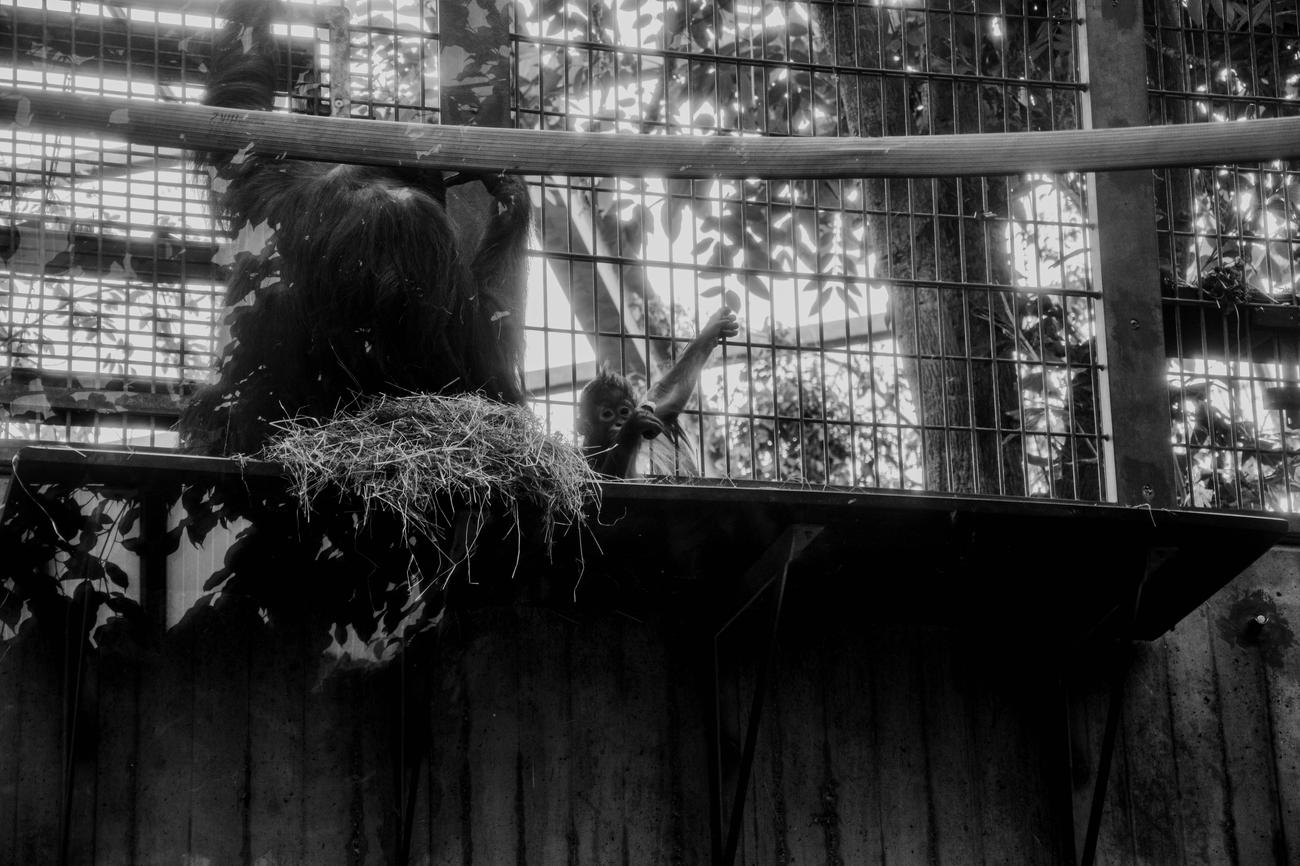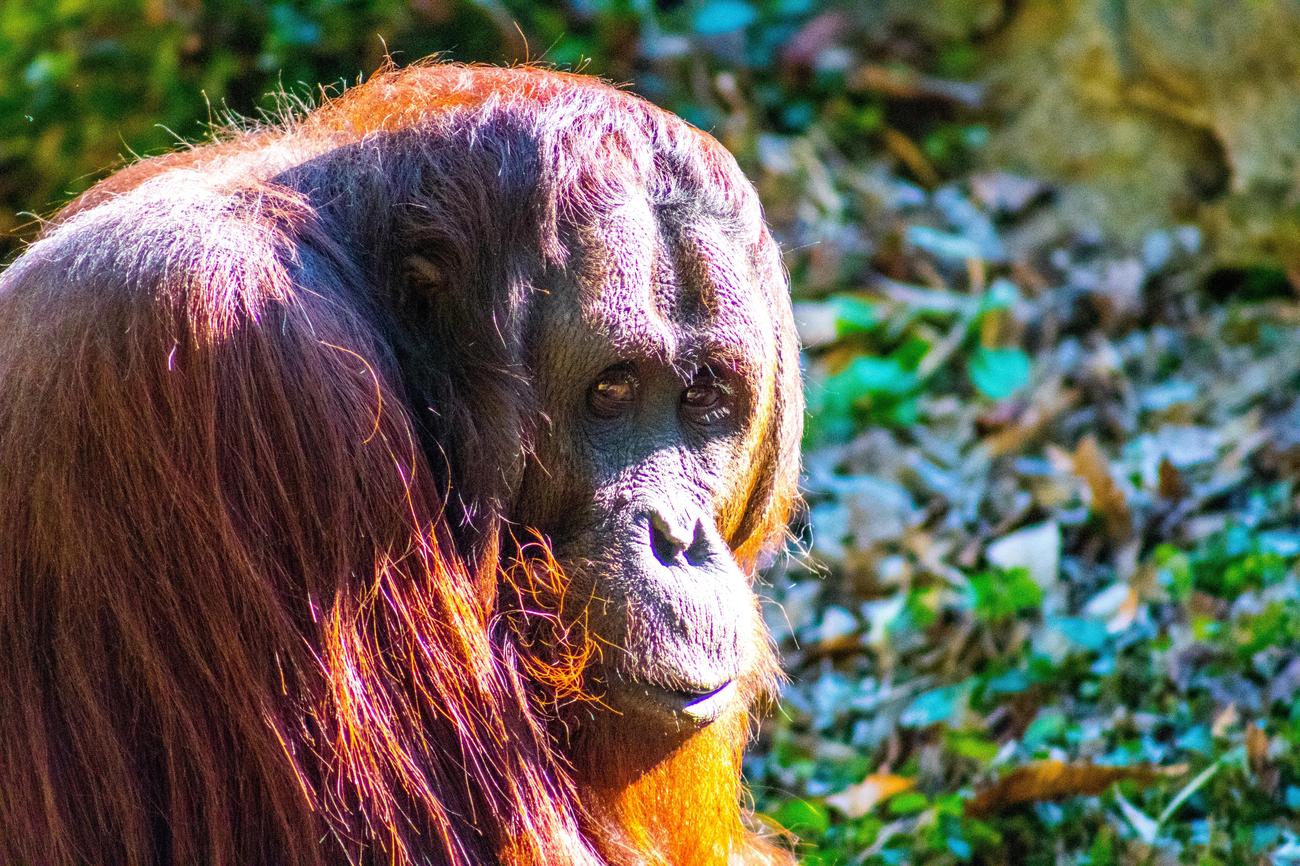Are you ready to embark on a journey into the hidden world of orangutans and their mesmerizing habitat? Brace yourself for a captivating exploration of the secrets and wonders that lie within the forests they call home. As an experienced wildlife journalist and conservation enthusiast, I have delved deep into the complex intricacies of orangutans and their unique habitat. With a passion for storytelling and a keen eye for detail, I am here to unveil fascinating facts about these incredible creatures’ habitat. Join me as we uncover the extraordinary features and astounding phenomena that make orangutan habitats truly awe-inspiring.

Interesting Facts About Orangutans Habitat
Orangutans, those magnificent red-haired apes, call the lush rainforests of Sumatra and Borneo their home. Living in the dense canopy of trees, they spend an astonishing 90% of their time amidst the emerald green foliage. But why? What makes their habitat so alluring?
Well, let’s take a closer look. Firstly, orangutans adore the mild temperatures offered by their rainforest abodes. With little variance in temperature and consistent length of daylight, these charming primates have found the perfect haven. It’s like living in eternal spring!
But that’s not all. The abundance of food in these forests is truly remarkable. Orangutans have a diverse diet that includes fruits like figs, durians, and mangosteen, just to name a few. Their habitat ensures a constant supply of these delicious treats, satisfying their sophisticated palates.
What fascinates me the most, however, is their extraordinary tree-dwelling lifestyle. Orangutans have mastered the art of life in the treetops, utilizing the countless trees as both their homes and playgrounds. From creating nests of leafy branches to swinging effortlessly through the forest canopy, orangutans have truly become the acrobats of the rainforest.
Can you imagine living 150 feet above the ground? Orangutans can! These incredible creatures aren’t afraid of heights. They have the ability to choose their preferred dwelling height, whether it’s a cozy residence just 10 feet up or a sky-high penthouse nestled amidst the branches. They have the best real estate in the forest!
So, why do they choose to live in the trees? Safety, my friends. Surrounded by the dense foliage, orangutans find protection from predators that would dare challenge their reign. Additionally, trees offer a unique advantage—a highly efficient mode of transportation. They can effortlessly navigate the rainforest highways, swinging from branch to branch, reaching their desired destinations with ease.
Let’s not forget the towering trees themselves. These giants not only provide shelter and safety for orangutans, but they also act as the architects of their habitat. The different layers of vegetation in the rainforest create a diverse ecosystem, offering a rich tapestry of life for orangutans to explore. From the towering emergent trees to the shady understory plants, each layer has its own charm and allure, just waiting to be discovered.
To truly understand the complex dynamics of orangutans’ habitat, we must acknowledge the role of rainfall. Rainfall plays a pivotal role in shaping the vegetation that flourishes in a particular area. From drippy rainforest canopies to soggy forest floors, the diverse rain patterns across the orangutans’ habitat give rise to an astonishing variety of plant life.
In conclusion, the habitat of orangutans is a captivating world filled with wonders. From the mild temperatures and abundant food to the intricate treetop lifestyle and the vibrant rainforest ecosystem, orangutans have found the perfect balance in their surroundings. This extraordinary habitat offers a sanctuary for these remarkable primates, providing them with all they need for a thriving existence in the heart of the rainforest.
“In the lush rainforests of Sumatra and Borneo, orangutans have crafted their own tropical paradise, where every moment is an adventure among the treetops.”
Orangutans are fascinating creatures that have captured the curiosity of scientists and animal lovers alike. Did you know that these intelligent primates can actually use tools? Yes, you read that right! Orangutans have been observed fashioning tools out of branches and leaves to help them navigate their environment and even forage for food. If you want to delve deeper into the world of these incredible apes, check out some interesting facts about orangutans. Trust us, you won’t be disappointed! Just click here: interesting facts about orangutans to uncover the hidden wonders of these captivating creatures firsthand.
Interesting Facts About Orangutans Habitat
Are you curious to learn more about orangutan habitat facts? These fascinating creatures have unique aspects to their habitat that you won’t want to miss! From the puzzled looks on their faces when presented with a new challenge, to their incredible strength and agility as they swing through the trees, orangutans’ habitat is truly awe-inspiring. Discover the captivating world of orangutans by diving into some of the orangutan habitat facts we have compiled for you. Don’t forget to check out our article on “Fascinating orangutan habitat information” to gain a deeper understanding of these incredible creatures and their habitat. In addition, explore the “Unique aspects of orangutan habitat” to uncover the secrets that make their environment so special. Click here to find out more and become an expert on orangutan habitat facts!
Fascinating Facts About Orangutans: Exploring their Rainforest Habitat
[youtube v=”uPB2AcuekpI”]
Orangutans, the glorious ginger great apes, are captivating creatures that inhabit the rainforests of Sumatra and Borneo. Spending 90% of their time in the dense canopy of trees, they have mastered life in the treetops, using trees as both homes and playgrounds. Let’s delve into the most intriguing facts about these highly intelligent creatures and their vibrant rainforest ecosystem.
1. Life in the Treetops: Orangutans’ rainforest habitat offers them mild temperatures and consistent daylight, making it an ideal dwelling place. They have adapted to an arboreal lifestyle, spending the majority of their lives high up in the treetops. The dense and towering trees provide them with shelter, safety from predators, and efficient transportation through the forest.
Orangutans have mastered the art of living in trees, making the rainforest canopy their home and playground. They can even choose their preferred dwelling height, with some individuals living as high as 150 feet above the ground.
2. Architectural Wonders: The rainforest’s towering trees serve as the architects of the orangutan’s habitat. These giants provide not only sturdy homes but also crucial shelter from the elements. By utilizing the different layers of vegetation in the rainforest, orangutans thrive in a diverse ecosystem teeming with life.
The rainforest’s vegetation creates a captivating world for orangutans. Different layers of trees, plants, and foliage shape a diverse ecosystem that supports a variety of species.
3. A Bounty of Food: With an abundance of food sources, including a plethora of fruits, the rainforest provides orangutans with a rich and varied diet. Orangutans are known to be frugivores, with fruits making up around 60% of their diet. This dietary preference has earned the durian, a huge spiky fruit notorious for its pungent odor, the title of their favorite fruit.
Orangutans are true food enthusiasts. Their diet consists mostly of fruits, but when food is scarce, they’re not afraid to turn to unconventional sources like soil and tree bark.
4. The Rainforest Ecosystem: Rainfall plays a pivotal role in shaping the vegetation and abundant plant life in the orangutan’s habitat. The vibrant and lush rainforest ecosystem, nurtured by the annual rainfall, provides a captivating backdrop for the lives of these great apes.
The rainforest ecosystem is a mesmerizing world that sustains orangutans and countless other species. Rainfall ensures the continuous growth and diversity of vegetation, making it a vital force in shaping their habitat.
In summary, orangutans are intelligent creatures that have found their niche in the rainforests of Sumatra and Borneo. Mastering life in the treetops, they have adapted to the abundance of fruits, the safety from predators, and the architectural wonders provided by the rainforest. This captivating world offers them mild temperatures, a vibrant ecosystem, and a unique arboreal lifestyle.
Orangutans’ ability to thrive in the treetops and their fascinating relationship with the rainforest make them a treasured species worthy of admiration and protection.
FAQ
Q: What is the habitat of orangutans?
A: Orangutans inhabit the tropical rainforests of Sumatra and Borneo in southeast Asia. They spend 90% of their time in the dense trees of the rainforest, sleeping in nests of leafy branches and using large leaves as umbrellas.
Q: What type of vegetation grows in orangutans’ habitat?
A: The type of vegetation in orangutans’ habitat varies based on rainfall. Tropical forests have little variance in temperature and length of daylight, but rainfall varies considerably, which is a primary factor in determining the vegetation that grows in an area.
Q: What are some interesting features of orangutans’ habitat?
A: Orangutans’ habitat consists of rainforests with mild temperatures and an abundance of food. The forests have numerous trees for the orangutans to live in and swing from, with some orangutans ranging from living about 10 feet from the ground to more than 150 feet up in the trees.
Q: Where do orangutans build their nests?
A: Orangutans build their nests in the trees of their habitat. These nests are made of leafy branches and provide a safe and comfortable place for orangutans to sleep.
Q: How does the orangutans’ habitat contribute to their conservation?
A: The intricate dynamics and diverse ecosystems of orangutans’ habitat play a crucial role in the conservation of these remarkable primates. Understanding their habitat helps in developing conservation strategies and ensuring the preservation of orangutan populations and their unique environment.
- Discover Long Black Pepper: Flavor & Health Benefits - April 25, 2025
- Shocking Twists: The Grownup Review: Unreliable Narration - April 25, 2025
- A Quiet Place Book vs Movie: A Deep Dive - April 25, 2025
















